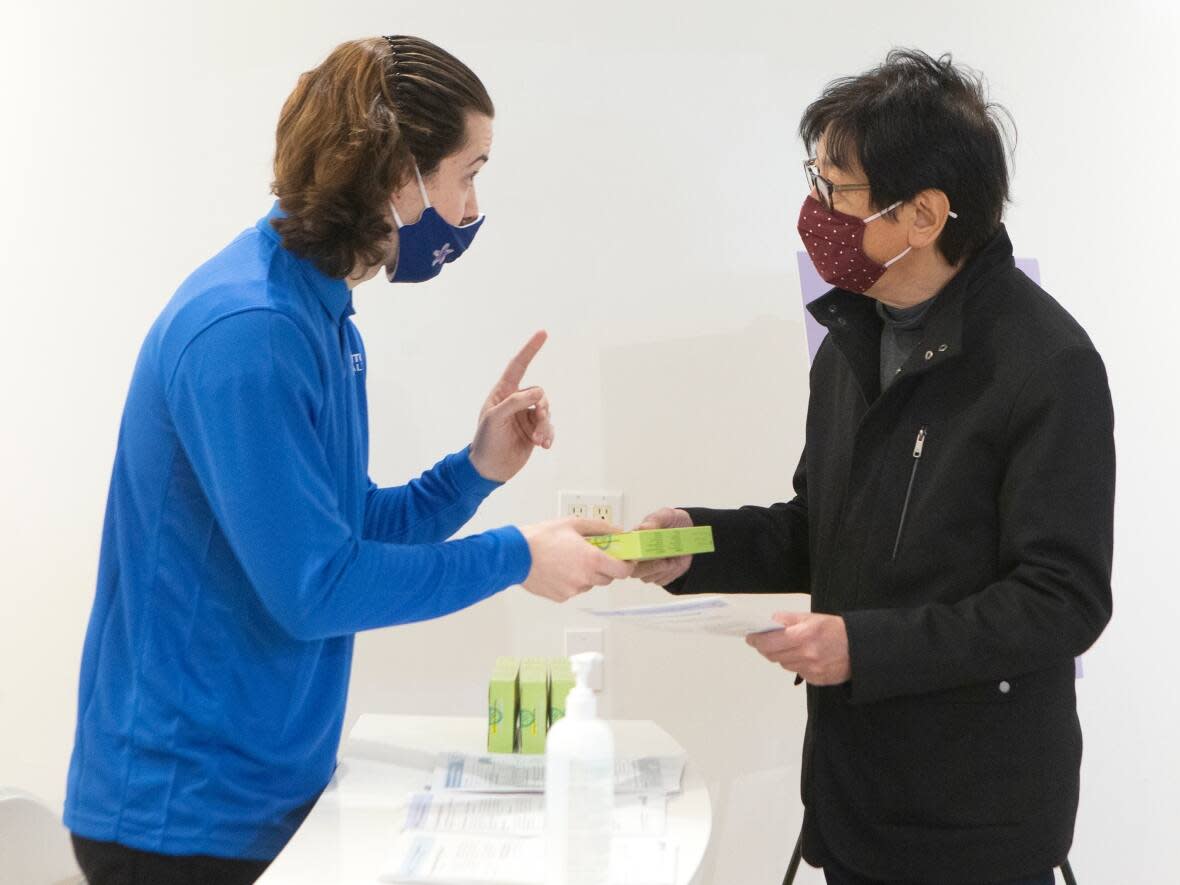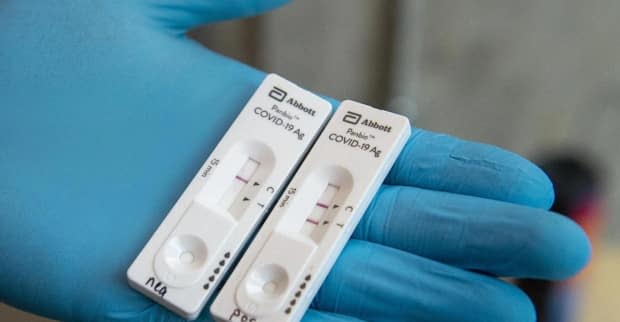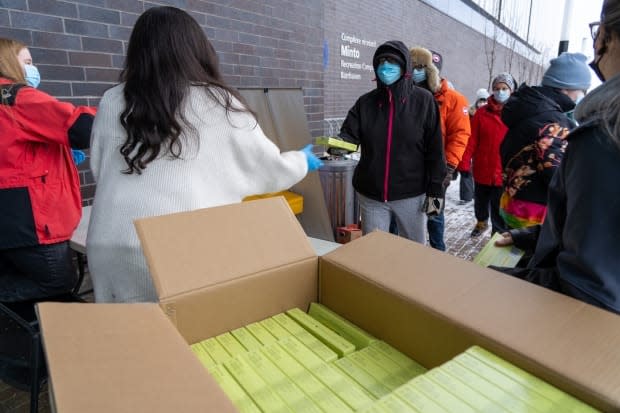You've got a rapid test. Now how do you use it?

In a matter of weeks rapid tests went from something you couldn't pay someone to take — according to Ontario Premier Doug Ford — to the hottest holiday find.
Ottawans have been lining up for hours at the only location in the city so far announced as part of the province's holiday distribution of free tests.
Dr. Vera Etches, Ottawa's medical officer of health, confirmed in the city's COVID-19 news conference on Wednesday the tests were in short supply and likely would be until the new year.
However, if you are able to get your hands on a package of tests, Lisa Bjerre, an expert on rapid tests, has advice on when and how to use them.
Bjerre is an epidemiologist and a chair in family medicine at the University of Ottawa.
How does a rapid test work?
A COVID-19 rapid antigen test — Bjerre says antigen is another way of saying virus — detects the SARS-CoV-2 virus in nasal secretions.
The test measures the amount of viral particles that make someone infectious and gives a yes or no result. It has a threshold at which the amount of particles tips the test over to a positive result.
Rapid tests measure the nucleoside cap protein, which is the protein that is wrapped around the virus's genetic material.
This is different from a polymerase chain reaction (PCR) test, which amplifies the virus's RNA, or genetic material. The amplification makes the virus detectable at lower levels and is why the PCR test is the gold standard.
Both tests are calibrated to test specifically for SARS-CoV-2 and Bjerre says you won't get a positive result if you have the flu, for example.
How do you use it?
The instructions below are for the Rapid Response rapid antigen test made by BTNX, but always make sure to follow instructions on your specific testing kit and adhere to public health guidelines in your region.
WATCH | A step-by-step guide on how to use a rapid test kit yourself:
The test kits contain a nasal swab, an extraction tube, buffer solution and a testing cassette.
Start by putting the buffer solution into the extraction tube.
Tilt your head back and gently put the swab into your nostril about half an inch and swirl it around for for five to 10 seconds. Then press down on your nostril and rotate the swab for another five to ten seconds.
Take it out and put it into the tube and make sure to get it entirely into the buffer solution by tilting the tube slightly.
Squeeze either three or five drops of the solution — it differs based on the brand of rapid test — onto testing cassette, in the round dip where you see the picture of the drops.
Set a 15-minute timer and then check for results. You did the test correctly and are negative if you see only one line by the "C" marker. If you see lines at the "C" and at the "T" marker, you've tested positive.

How accurate is a rapid test?
If a rapid test is positive, it's very likely the person has COVID-19. Bjerre says the tests have an accuracy of around 97 or 98 per cent.
But she says they're like pregnancy tests, take one too early and the test will be negative.
With Omicron, she says scientists are finding there's a much shorter incubation period in the body — between 1.5 and three days — unlike Delta, which had an incubation period of five to six days on average.
That means in a very short period of time there's huge growth in a person's viral load and less of a window for false negatives.
When should you use one?
"I think the test should only be done if it's going to change how you're going to act," Bjerre said.
She suggests taking one an hour before going to a gathering to determine if you're infectious. However, she cautions, if you're feeling under the weather — even if you test negative — don't go. Stay home and take another test in 24 hours.
The tests are a "snapshot in time" and the results could change within a day.

"It could be that they're in the very early stages of becoming symptomatic with the coronavirus and that their number of viral particles is still too low to be detected by the rapid test," she said.
Children who were learning in-person in Ontario were sent home with five tests for the holidays with the directions to take a test every three or four days over the break.
What happens if you test positive?
Etches announced updated isolation rules at Wednesday's press conference as a result of rising case numbers and limited testing capacity.
While labs still have some capacity to handle PCR tests, the city is short on people to administer them and enter the necessary data, she said.
You must isolate for 10 days if you or anyone in your household has symptoms or tests positive via a rapid test or a PCR test.
Because of the limited capacity, walk-ins for PCR tests may be turned away as the city is prioritizing essential workers for testing.


